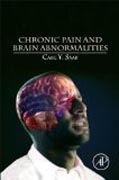
It is only natural for someone in pain to attend to the body part that hurts. Yet this book tells the story of persistent pain having negative effects on brain function. The contributors, all leading experts in their respective fields of pain electrophysiology, brain imaging, and animal models of pain, strive to synthesize compelling and, in some ways, connected hypotheses with regard to pain-related changes in the brain. Together, they contribute their clinical, academic, and theoretical expertise in a comprehensive overview that attempts to define the broader philosophical context of pain (disentangling sensical from nonsensical claims), list the changes known to take place in the brains of individuals with chronic pain and animal models of pain, address the possible causes and mechanisms underlying these changes, and detail the techniques and analytical methods at our disposal to visualize and study these changes. Philosophical and social concepts of pain; testimonials of chronic-pain patientsClinical data from pain patients' brainsAdvances in noninvasive brain imaging for pain patientsCombining theoretical and empirical approaches to the analysis of pain-related brain functionManipulation of brain function in animal models Emerging neurotechnology principles for pain diagnostics and therapeutics INDICE: 1. Introduction2. Morphological Evidence for Pain-Related Brain Changes: Imaging3. Thalamic and Cortical Irregular Firing in Pain Patients4. Aberrant Pain-Related Rhythms in the Brain5. Surgical Brain Interventions for Pain6. Supraspinal Sensitization in Pre-Clinical Animal Models of Pain7. Future Directions
- ISBN: 978-0-12-398389-3
- Editorial: Academic Press
- Encuadernacion: Cartoné
- Páginas: 176
- Fecha Publicación: 28/08/2013
- Nº Volúmenes: 1
- Idioma: Inglés
